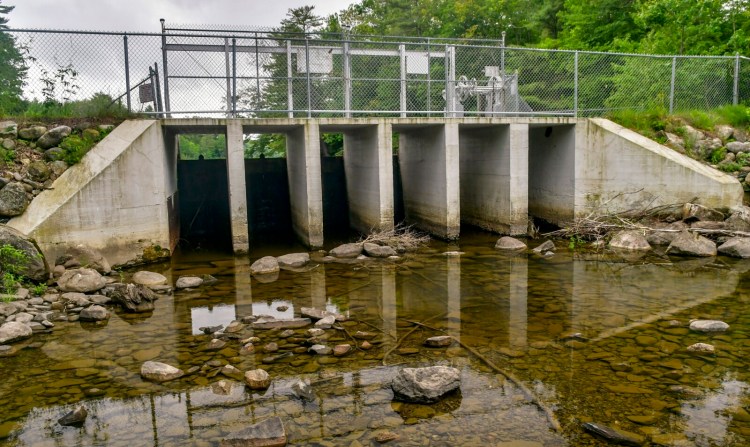LITCHFIELD — As part of Litchfield’s plan to address structural issues with the Woodbury Pond Dam, the board of selectmen on Monday unanimously approved spending $9,074.86 for engineering work to determine the best course of action in permanently fixing the structure.
This expense falls directly in between initial estimates for engineering support, which ranged from $8,500 to $9,500.
 Town Manager Kelly Weissenfels said the money is specifically for evaluating the leak and producing a diagram of the dam where sandbags could be placed as a short-term fix.
Town Manager Kelly Weissenfels said the money is specifically for evaluating the leak and producing a diagram of the dam where sandbags could be placed as a short-term fix.
“It’s basically the initial engineering to let us know what options we have and the approximate cost for those options,” he said, adding that he spoke with engineers last week and they hope to have an estimate for phase two of the project by the end of this week.
The problems with the dam were first discovered this spring when dam keeper Terry Averill noticed settlement of the stone riprap next to the right side of the upstream training wall, and that the wall had also started seeping around 7 feet, with the seepage intensifying at 7 1/2 feet.
Engineering firm Wright-Pierce of Topsham surveyed the dam shortly after, with the help of geotechnical engineering consultants from Haley & Aldrich.
And in two visits less than a month apart, they noted that the riprap adjacent to the upstream wall had continued to settle, and ultimately determined that the issue was related to a loss of materials within a 10-foot area of the embankment.
Residents then approved adding $55,000 to the municipal budget to help repair the dam during Litchfield’s annual Town Meeting in June.
Initially, a two-phase approach was pitched, with the first phase involving a short-term fix and the second being a long-term repair. At first, phase one involved installing sandbags and pressure grouting the area.
This short-term phase would have kept the area stable for up to two years while money was raised for one of three long-term fixes: installing a concrete core within the existing dam embankment, installing a steel sheet pile cutoff wall on the upstream face of the dam, or installing a concrete secant pile wall on the upstream face of the dam.
However, town officials have since considered a more direct path toward the long-term fix, a move that could save the town approximately $150,000 compared to the first plan.
With the new plan, the town would skip the pressure grouting and just install the sandbags for phase one. Skipping the pressure grouting would save the town an estimated $150,000, but only keep the issues at bay for seven months as opposed to two years. Litchfield is also considering using town equipment to lay the sandbags, which are one cubic yard of sand each, as a cost-saving measure.
And by the end of those seven months, Weissenfels said he hopes that engineering work will be complete and the town could obtain permits for the long-term fix.
He said on July 27 that the town’s main driving force now is to get started on the permitting process and to begin approaching possibilities for grants and additional money for the long-term fix, which could cost approximately $300,000.
Some options for funding include obtaining a low-interest loan through the Maine Emergency Management Agency’s State of Maine Dam Safety program and the Maine Municipal Bond Bank, contacting the U.S. Department of Agriculture, and looking into obtaining grants through other state programs such as the Maine Outdoor Heritage Fund and Maine Grants for Wetland Restoration.
Send questions/comments to the editors.



Success. Please wait for the page to reload. If the page does not reload within 5 seconds, please refresh the page.
Enter your email and password to access comments.
Hi, to comment on stories you must . This profile is in addition to your subscription and website login.
Already have a commenting profile? .
Invalid username/password.
Please check your email to confirm and complete your registration.
Only subscribers are eligible to post comments. Please subscribe or login first for digital access. Here’s why.
Use the form below to reset your password. When you've submitted your account email, we will send an email with a reset code.